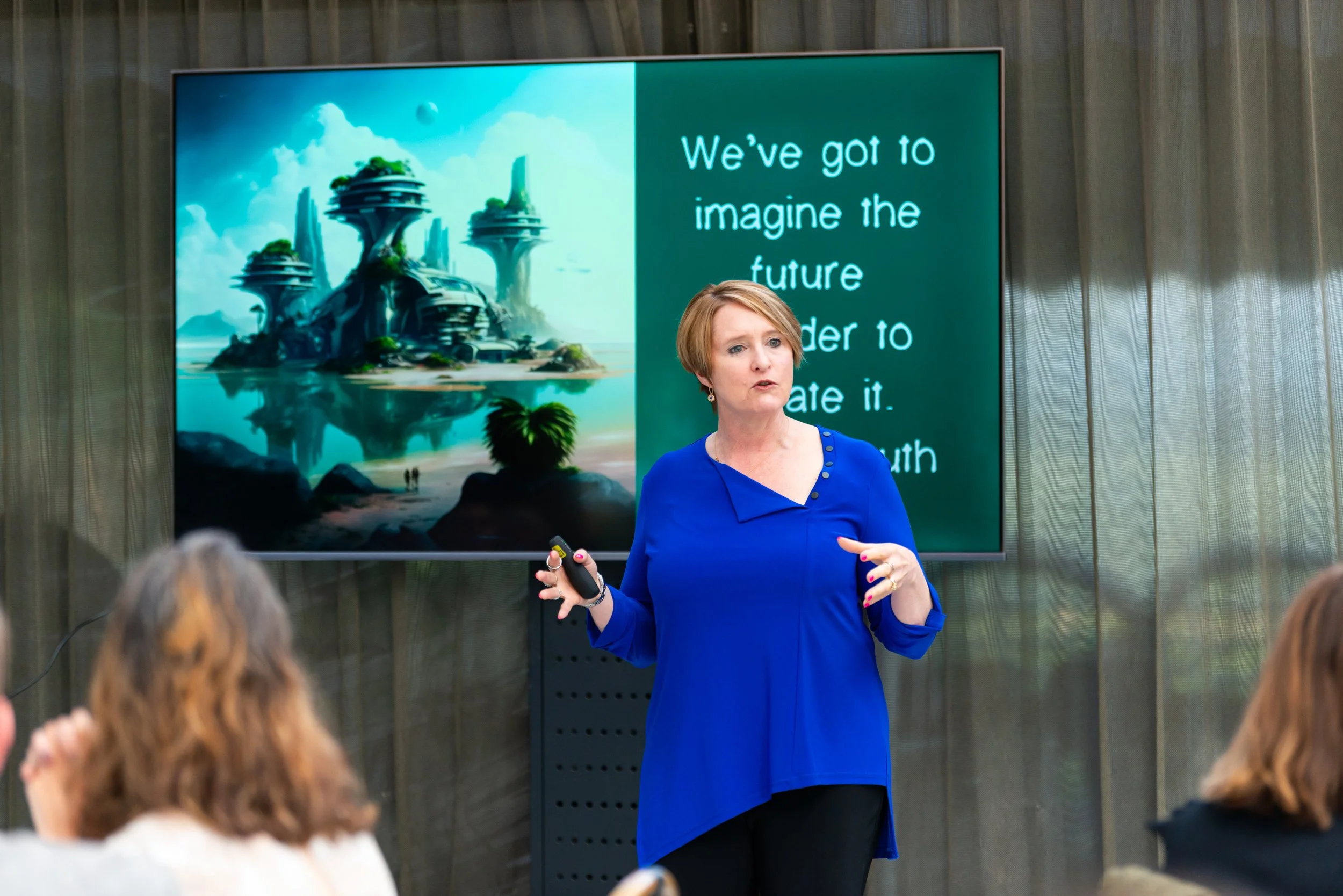Many leaders think they’re pretty good at strategic thinking.
Then they get into a groove with strategic planning, putting all those good ideas into practice.
It’s strategic doing that brings them undone.
Strategic Doing Starts With Not Doing
There’s an enormous list of things you should be doing:
Meditating
Practicing gratitude
Exercising
Drinking green juice
Setting intentions
Foam rolling
Having meaningful conversations with your spouse.
That takes a lot of time!
Yet, there are equally important things you should not be doing:
Micromanaging
Playing the rescuer by doing someone else’s job
Hoarding work and not delegating
Losing time to social media’s dopamine loops
Focusing on tasks that don’t support your strategic objectives.
Where are you burning valuable time and energy not working on what’s important?
Key Principles to Get More Strategic with Your Doing
Is this task moving you closer to your vision?
Leaders often get caught up in tasks that seem important in the moment but don't really push the needle forward. Every task should be evaluated based on its contribution to your long-term strategic vision.Ask yourself: Is this taking me closer to the leader I want to be and the results I want to achieve?
Rituals vs. Habits: What’s your intention?
Habits are automatic, often unconscious behaviours, while rituals are intentional, purposeful acts. Successful leaders have more rituals than habits, and these rituals support their identity and goals.Shift your daily practices from mindless habits to mindful rituals aligned with your strategic vision.
Saying Yes Means Saying No to Everything Else
Every time you say yes to a new task or commitment, you're automatically saying no to something else—usually your time and focus. Be mindful about what you agree to, and remember that strategic leaders know the power of selective 'yeses.'By saying no more often, you create space for activities that truly align with your goals.
Master the Art of Deletion
One of the most powerful tools in a leader’s toolkit is the ability to remove unnecessary tasks, distractions, and even projects. Being ruthless about what you eliminate is crucial to staying on track.A key superpower in leadership is prioritising tasks that actually move the needle and deleting the rest.
Fail Better: Learn and Iterate
Sometimes we don’t take action because we are afraid to fail. Drawing on Amy Edmondson’s work on psychological safety, successful leaders create environments where their teams can openly admit mistakes, learn from them, and move forward with stronger, more informed strategies.Failing better means treating each setback as an opportunity for growth. It’s not just about fixing errors, but about reflecting, experimenting, and iterating for continuous improvement. Leaders who foster a culture where it’s safe to fail encourage innovation, deeper engagement, and a more resilient organisation.
Great failures come from good experiments.
Many leaders struggle with strategic doing and end up with task overwhelm (everything is important, and there is too much of everything.) Thus, no room for innovation, or being STRATEGIC in responding to changing circumstances.
The Doing becomes Default, and then we lose relevance, left behind by the tide of change.
In order to stay ahead, embrace the opportunities and deal with threats in a changing environment, we need to run experiments: to test new ways of doing, new ways of thinking, new markets, new products, new services, so that we meet the changing needs of our times.
Not all experiments are designed well.
Many leaders make these mistakes:
a. Don't run any experiments at all.
b. Don't have clear time or resource boundaries.
c. Don't have a clear idea of the information/knowledge/insights they want from the experiment.
d. Don't measure the impact of the experiment.
Example:
"We need to incorporate AI into our work." Blank stares and silence. Someone coughs and speaks up: "I use chat GPT to do research."
The leader smacks the table gleefully. "Excellent! I want a report in four weeks on how it's helped."
Then some vague hand waving later, there is a report that says Chat GPT was better than google for search and the team declares they have added AI into their business systems.
We can run this experiment differently:
Identify the work process that is currently laborious or time consuming.
Investigate AI solutions to see if this can be automated or augmented.
Test the AI solution for ease of use, ease of integration, cyber security, time saved per process, return on time invested, quality and accuracy of the process using AI. Run the experiment over a four week period with no more than $300 of software investment.
Learn how to design great workplace experiments at the Leadership Conclave on 8 November.
Guiding Questions for Strategic Doing
Is this task aligned with my vision or am I just checking a box?
Am I acting out of habit or intention?
What am I willing to let go of to focus on what truly matters?
How can I use this failure to strengthen future outcomes?
Live with grace, lead in service.
Zoë
P.S. Want more insights on the Future of Leadership?
Each month get additional insider only resources including discussion questions, water cooler factoids, implementation tip sheets/checklists/worksheets.
Zoë Routh is a leadership futurist, podcaster, and multiple award-winning author. She works with leaders and teams to explore what's coming and what it means for leadership of the future.
Zoë is an outdoor adventurist and enjoys telemark skiing, has run 6 marathons, is a one-time belly-dancer, has survived cancer, and loves hiking in the high country. She is married to a gorgeous Aussie and is a self-confessed dark chocolate addict.

